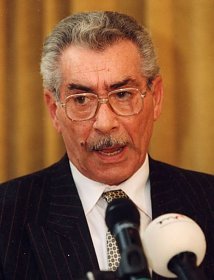HMDT Blog: Auschwitz-Birkenau’s Roma survivors
During this year’s Gypsy Roma Traveller History Month, historian Rainer Schulze reminds us of the systematic persecution the Roma and Sinti suffered during the period of Nazi rule in Germany and in Nazi-occupied Europe.

Rainer is Professor of Modern European History at the University of Essex and the programmer of the University of Essex’s annual Holocaust Memorial Week. In this blog, Rainer introduces us to three survivors of the Auschwitz ‘Gypsy Family Camp’: Ewald Hanstein, Hugo Höllenreiner and Ceija Stoika.

Ewald Hanstein
Only 15 per cent of the Roma and Sinti who were deported to the Auschwitz Zigeunerfamilienlager in 1943-44 did not perish there. They were the ones who were considered fit enough for forced labour and transported to other camps before the liquidation of the Zigeunerfamilienlager during the night of 2 August 1944.
One of them was German Sinto Ewald Hanstein, born in 1924. He grew up in Breslau (then Germany, now Wrocław in Poland) until his family decided to move to Berlin in 1936. They hoped to experience less discrimination as Sinti there, and his father, a member of the Communist Party, also expected to escape Gestapo surveillance.
However, when they arrived in Berlin, they were immediately sent to the city’s newly established Marzahn camp. In June 1938, all men from Marzahn above the age of 14 were deported to Sachsenhausen concentration camp on the outskirts of Berlin to carry out forced labour, including Ewald’s father, his brother Paul and two of his uncles. Barely 14 himself, Ewald became the head of his remaining family, but went underground in 1940 when he was called up for the German army. He was eventually betrayed and in May 1943 deported to the Auschwitz Zigeunerfamilienlager. In the camp he was reunited with members of his family who had also been deported to Auschwitz, and his unbending sense of responsibility for them helped him survive forced labour, malnutrition, ill-treatment and typhus.
On 16 May 1944, he witnessed the resistance put up by the Roma and Sinti as the SS attempted to ferry them to the gas chambers. In early August, knowing that the liquidation of the Zigeunerfamilienlager was only a matter of days, he took the most difficult decision of his life: he joined the last transport from Auschwitz to Buchenwald concentration camp and left his remaining family behind to face certain death in the gas chambers. He was tormented until his final days by the crying of his fellow Roma when his train pulled out.
After a few weeks in Buchenwald, Ewald was sent to Mittelbau-Dora where the V-2 rockets were produced. In early April 1945, when Mittelbau-Dora was evacuated, he was forced on a death march through the Harz mountains until he was eventually liberated by American troops south of Magdeburg, weighing just 40 kg.
Ewald died in 2009 in Bremen. In his 2005 autobiography, he wrote: ‘Sometimes, when I lie in bed at night, I see their faces: that of my mother Maria, my father Peter, my sisters Gertrud, Elisabeth, Lydia and Ramona, my brother Gregor, my grandmother and of all the others. Not one of them survived Auschwitz, and the Nazis even took all the photos away – but I recall them vividly. I am astonished that I am still alive: why me?’
Hugo Höllenreiner (centre) at the laying of the foundation stone for the new Information and Documentation Centre at the Gedenkstätte Bergen-Belsen, 17 April 2005.
There were also a few children who survived the Zigeunerfamilienlager. German Sinto Hugo Höllenreiner, born 1933 in Munich, was arrested with his family on 8 March 1943, and only a few days later they were deported to Auschwitz, penned into cattle wagons for six days without food or water. His grandmother did not survive the ordeal; SS men threw her body down a railway embankment. At Auschwitz, Hugo was subjected to brutal ‘medical’ experiments by Dr Josef Mengele, leaving him with a torn kidney and terrible scars, but to this day he does not know what exactly Mengele did to him. Hugo survived the sadistic experiments and, a few weeks before the liquidation of the Zigeunerfamilienlager, he was transported first to Ravensbrück and then to Mauthausen. He was eventually liberated at Bergen-Belsen by British troops on 15 April 1945. Against all odds, his parents and siblings also survived, but 36 members of his wider family perished. Until the end of his life, Hugo suffered from nightmares which took him back to the Zigeunerfamilienlager, the clacking of the boots, the icy gaze of Mengele. He died on 10 June 2015 in Ingolstadt, near Munich.
Ceija Stojka was born into an Austrian Lovari Roma family in 1933. She, too, was deported to the Auschwitz Zigeunerfamilienlager in 1943, together with those members of her family who had not been arrested or murdered earlier. She survived selection upon arrival because her mother told the SS that she was 16 and just a bit small for her age. This meant that she was considered old enough for forced labour and did not meet her end in the gas chambers. She was later transported to Ravensbrück and liberated at Bergen-Belsen. Only her mother and five siblings survived from her extended family of over 200. Ceija died in 2013, aged 79, in Vienna. Read out more about her in the Holocaust Memorial Day Trust’s life story.
Read the other blogs in Rainer’s series for Gypsy Roma Traveller History Month:
- The life of Sinto boxer Johann ‘Rukeli’ Trollmann
- Auschwitz-Birkenau’s Gypsy Family Camp
- Auschwitz-Birkenau’s Roma survivors
- Persecution of Roma varied across east and south-east Europe
- Roma survivors from former Yugoslavia
- The Roma community’s long battle for public recognition
- Settela’s story
- How should we remember the Nazis’ Roma victims?
Image credit: Ewald Hanstein, Bremen; Stiftung niedersächsische Gedenkstätten, Celle / Gedenkstätte Bergen-Belsen; Forget Us Not